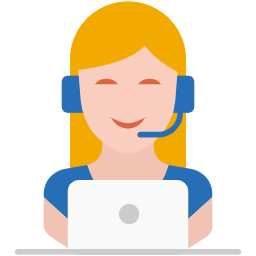WordPress is a free open source blogging tool and content management system. WordPress can be used to create a traditional blogging site; however, it can also be used to create a standard website for business or personal use. This course focuses on creating websites using WordPress. No previous experience is needed. This course is structured in a way to help all students, regardless of their experience, learn WordPress.
Students will learn how to:
- Set up a domain and hosting account
- Set up a MySQL database on their server
- Install WordPress on the MySQL database
- Plan their website by choosing color schemes, fonts, layouts, and more
- Search for themes in WordPress
- Select, install, and activate a theme
- Add posts to their website
- Create website pages
- Add images, photo galleries, and more
- Create tags for SEO and categories to organize their posts
- Use WordPress as a content management system (CMS)
- Use widgets and plugins
- Create an ecommerce site
- Integrate WordPress with social media
- Customize a WordPress site using PHP, CSS, and HTML And more.
Curriculum
- 15 Sections
- 147 Lessons
- 24 Days
- Introduction to WordPress5
- Finding a Home for your WordPress Site4
- Installing WordPress on Your Site6
- Content Management using WordPress13
- 5.1Archiving content
- 5.2The purpose of categories
- 5.3Naming a category
- 5.4Creating a new category
- 5.5About static page parents and children
- 5.6Permalinks
- 5.7Syndicated content (RSS)
- 5.8Checking Links with Your Server
- 5.9Dressing up links
- 5.10Customizing links
- 5.11About Feed Readers
- 5.12RSS options
- 5.13RSS and Social Media
- Selecting the Right Tools9
- Image Formats7
- Fonts and Colors10
- Designing Your WordPress Site8
- The WordPress Default Layout9
- Themes and Templates14
- 11.1About WordPress themes
- 11.2PHP and MySQL ✓ Defining PHP
- 11.3The template tags
- 11.4Using PHP
- 11.5Managing your database
- 11.6Template files
- 11.7How templates work with WordPress themes
- 11.8Stylesheets
- 11.9About the Main Index and The Loop
- 11.10The different templates
- 11.11Template tags, values, and parameters
- 11.12Using template tags in blog posts
- 11.13Connecting templates
- 11.14Using more than one stylesheet
- More on Widgets and Template Tags15
- 12.1Common template tags
- 12.2Calendar
- 12.3List pages
- 12.4Post archives
- 12.5Categories
- 12.6Content types
- 12.7More template tags
- 12.8Adding widget areas
- 12.9Registering widget ideas
- 12.10Adding widget areas to template files
- 12.11Using template files
- 12.12Named templates
- 12.13Template parts
- 12.14Page templates
- 12.15Adding support
- Parent and Child Themes10
- 13.1Understanding parent and child themes
- 13.2Creating a child theme
- 13.3Loading a parent theme style
- 13.4Customizing the parent theme style
- 13.5Using images in child theme designs
- 13.6Edit theme structure with child themes
- 13.7Overriding parent template files
- 13.8Adding new template files
- 13.9Removing template files
- 13.10Modifying theme functions file
- Creating a Custom Site16
- 14.1Getting acquainted with CSS
- 14.2CSS Selectors
- 14.3Classes and IDs
- 14.4CSS properties and values
- 14.5Changing background mage or colors
- 14.6Adding a custom background
- 14.7Changing the background with CSS
- 14.8Positioning your header image using CSS
- 14.9Repeating or scrolling background images
- 14.10Changing theme elements
- 14.11Adding effects
- 14.12Setting font, color, and size
- 14.13An introduction to basic HTML
- 14.14Inserting images
- 14.15Inserting links
- 14.16Inserting lists
- Using WordPress as a Content Management System11
- 15.1Creating the front page
- 15.2Creating a static page
- 15.3Using a static page as your front page
- 15.4Making a blog look like a website
- 15.5Creating blank blog pages
- 15.6Assigning the new page as a blog page
- 15.7Creating custom page templates
- 15.8The default page template
- 15.9Comparing templates
- 15.10Using different sidebar and footer templates
- 15.11Custom styles for sticky, category, and tag posts
- Using WordPress Plugins10
- 16.1Installing plugins using the dashboard
- 16.2Finding plugins
- 16.3Installing and activating plugins
- 16.4Installing plugins manually
- 16.5Ecommerce plugins
- 16.6Photo galleries and portfolios
- 16.7Inserting images onto pages or into posts
- 16.8Creating web forms using plugins
- 16.9About Buddy Press
- 16.10Integrating plugins with social networks


